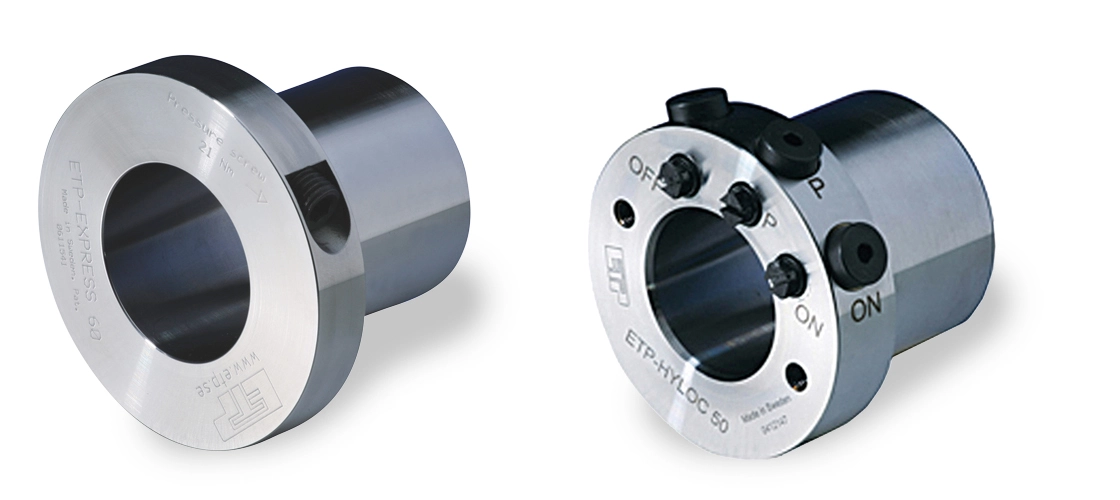
ETP locking bushes
Locking bushes and locking elements for a quick and safe shaft-hub joint
Locking bushes make possible a friction-fit shaft-hub joint for backlash-free torque transmission. The bushes are designed to be quick and easy to install and disassemble.
Operating principle
Many years ago, the scientist Pascal discovered and formulated the principle of pressure distribution in fluids. ETP utilised this principle and applied it during the development of the shaft-hub joints. A hydraulic pressure medium enclosed in a double-walled bush is placed under pressure using screws or an external pump. The bush expands and generates an even amount of contact pressure on the shaft and hub.
Advantages
Users are increasingly asking for smaller mounting dimensions, better concentricity, better balance quality at higher speeds, shorter standstill times during maintenance and service, as well as increased precision. This has resulted in a constantly increasing number of hydraulic ETP shaft-hub joints being used.
CAD data for hydraulic locking bushes
Hydraulic locking bushes
These locking bushes consist of double-walled steel sleeves containing a hydraulic medium. Pressure is applied by tightening pressure screws (ETP-CLASSIC®, ETP-CLASSIC® R, ETP-EXPRESS®, ETP-EXPRESS® R, ETP-TECHNO®, ETP-POWER®, ETP-EXPAND®), using a grease gun (ETP-HYDROPRESS®), or via an external pressure source (ETP-OCTOPUS®). This results in a uniform expansion of the steel sleeve against the shaft and hub, creating a friction-locked connection. Loosening the screw and/or releasing the pressure causes the locking bush to return to its initial state. The shaft-hub joint can be dismantled.
Standard versions for shaft diameters from 15 mm to 130 mm and torques from 46 to 15,500 Nm.
The product pages contain not only technical details and catalogues, but also animations on the method of functioning of the individual locking bushes.
Hydromechanical locking bushes
The hydromechanical locking bush ETP-HYLOC® consists of a double-walled steel sleeve with an integrated, movable conical piston. The piston is moved using a hydraulic pump. This causes the sleeve to expand against the shaft and hub and create a friction-locked connection. After installation, there is no longer any hydraulic pressure in ETP-HYLOC®. The small conical angle of the piston results in self-locking. During disassembly, the piston is moved in the opposite direction and the connection is released.
Thanks to the durable structure of the locking element, ETP-HYLOC® is suitable for applications under the harshest conditions.
- Standard versions for shaft diameters from 30 mm to 220 mm
- Standard versions for torques (depending on shaft tolerance and installation pressure) from 800 to 338,000 Nm.
The product pages contain not only technical details and catalogues, but also animations on the method of functioning of the individual locking bushes.
